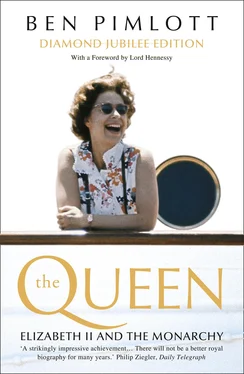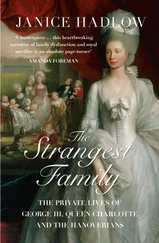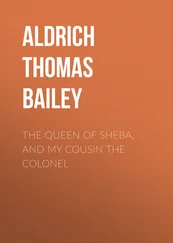The 1937 Regency Act, which had been passed following George VI’s accession, had provided for two forms of delegation of royal powers: to a Regent, in the event of a child under eighteen succeeding, or of the total incapacitation of a monarch; and to five Counsellors of State, composed of the Consort and the four next in line of succession, in the event of the Sovereign’s illness or absence abroad. However, the provision disqualified anybody not ‘a British subject of full age,’ which effectively meant that Elizabeth could succeed her father as Monarch with full powers at eighteen, but not deputise for him as a Counsellor until she was twenty-one. 58
Nobody noticed this anomaly until an eagle-eyed lawyer pointed it out to the King’s private secretary, Sir Alexander Hardinge, in the autumn of 1942. Hardinge at first dismissed it. It was ‘common sense,’ he replied to the lawyer tartly, to regard the Princess as fully of age if she could succeed without a Regent. 59The Lord Chancellor, Lord Simon, however, disagreed: due to bad drafting, the law and common sense did not coincide. 60There the matter might have rested, had not the King himself indicated his desire to have his daughter as a Counsellor of State. The Lord Chancellor was once again consulted, and recommended to the Prime Minister that the law be changed in order to permit the Heiress Presumptive to become a Counsellor, bearing in mind ‘the qualities of the young lady and the wish of her parents’. 61As Allied troops invaded Sicily in July 1943, George VI spoke to Winston Churchill on the matter, and secured a promise that it should be brought up at War Cabinet, with a view to a quick Bill. ‘He quite agrees this should be done,’ wrote the King. 62Cabinet assented, and in October, the Labour Home Secretary in the wartime Coalition, Herbert Morrison, introduced legislation, arguing that the responsibility would give the Heiress valuable experience.
The new Act received the Royal Assent in time for the eighteen-year-old Princess to become a Counsellor, along with her mother and three others, during her father’s visit to Italy in July 1944. In his absence she performed her first constitutional functions, which included signifying the Royal Assent to Acts which had been passed by Parliament. Yet she was still not ‘a British subject of full age’, or legally old enough to vote in an election.
A further question also arose in connection with the Princess’s eighteenth birthday: the possibility of a change of title. During 1943, letters and articles appeared in the press suggesting that, in view of her unchallenged position as Heiress, it would be appropriate to designate her ‘Princess of Wales,’ an idea first mooted in 1936. In August, Pwllheli Town Council petitioned the Prime Minister on the subject, 63recommending the Princess’s birthday as a suitable moment. At the end of the year, the Carmarthen Journal reported that no project in recent years had been more popular, 64and early in 1944, the Welsh Parliamentary Party, composed of Conservative, Liberal and Labour MPs, joined the campaign. It was pointed out, on all sides, that such a gesture would be greeted with enthusiasm in the Principality, with great benefits to Anglo-Welsh relations.
The Palace, however, demurred. While appreciating the sentiment behind such a proposal, it was unwilling to be swept along by a wave of populist fervour. The key issue, it decided, was the precedent for such a bestowal of title, and the lack of one. The title ‘Prince of Wales’ had only ever been given to the Heir Apparent. Princess Elizabeth was merely Heir or Heiress Presumptive. Could the Princess perhaps be promoted from Presumptive to Apparent? The Home Office was asked to investigate. ‘I have looked into your question about HRH Princess Elizabeth’, J. A. R. Pimlott, a Home Office official, wrote to Sir Eric Miéville. ‘Where the heir to the throne is a woman her right of succession is defeasible at any time by the birth of a son to the reigning Sovereign. HRH Princess Elizabeth therefore remains Heir Presumptive till she in fact succeeds.’ This had been true, he pointed out, of Victoria in 1837. Though Queen Adelaide, widow of William IV, had no child for seventeen years, it was thought constitutionally advisable in proclaiming the accession of Queen Victoria to guard against the possibility of a posthumous birth. The new Sovereign was therefore proclaimed Queen ‘saving the rights of any issue of his Late Majesty King William IV which may be born of His Late Majesty’s Consort’. 65
This, however, was not the end of the matter. Though it dealt with the Presumptive-Apparent problem – by definition, no female could be Apparent – it did not dispose of the issue of whether there was any precedent for calling a female Heir, even though only Presumptive, by the Welsh title. Indeed, an inquiry seemed to show, on the basis of records kept by a sixteenth-century German ambassador, that Henry VIII had considered that whichever of his daughters was Heir to the throne should be known as Princess of Wales. 66For a short time, there was consternation, and uncertainty. However, the evidence to support such a claim was shadowy, and when it was put to Sir Gerald Wollaston, Garter Principal King of Arms, he was dismissive. He also pointed out the danger of setting a new precedent, opening the doors to the alarming future possibility, if George VI had a son who then married, of there being two Princesses of Wales. 67
The Palace view hardened. There remained, of course, the political complication of public opinion, which would be disappointed, especially in Wales, by a negative decision. But the King’s new private secretary, Sir Alan Lascelles, regarded this as a minor factor. ‘I have no doubt that the matter will be raised in Parliament before long, and of course the Commons have a right to do so,’ he wrote to the King in January 1944, shortly before the Allied forces landed in Anzio. ‘As long ago as 1376, they petitioned Edward III to make his grandson, Richard of Bordeaux, Prince of Wales.’ 68Not everybody, however, agreed that the views of parliamentarians should be as readily ignored in the twentieth century as in the fourteenth. One objector was Herbert Morrison, who suggested that to make the King’s elder daughter Princess of Wales would deal neatly with any suggestion that the Government was anti-Welsh. It did not matter, Morrison reasonably suggested, if there was no precedent. Moreover, in the unlikely event of a male heir being born, the title could simply lapse.
The Home Secretary’s minute on the subject of 28th January 1944 was sent to the Palace, but Lascelles, no mean politician on issues he regarded as important, deliberately withheld it from the King. 69Probably it made no difference. A few days earlier, Jock Colville recorded in his diary that, while the Cabinet approved of the idea of making Elizabeth Princess of Wales, her father did not. 70The royal will prevailed. At his weekly audience, Churchill promised the King that he would tell the Minister of Information to ‘damp down all discussion of this question in the Press,’ in order to avoid a row. In February, it was officially announced from Buckingham Palace that there would be no change in the Princess’s title on her eighteenth birthday. ‘This will check the spate of press comment and general chatter,’ Lascelles recorded on 13 February. As a result, the principality was without a Prince or Princess until 1958. The oft-repeated explanation for this vacancy was ‘the very real distinction between heirs apparent and presumptive’. 71
TO CONSOLE the Welsh, the King and Queen took Princess Elizabeth with them on a tour of mining and industrial areas in South Wales early in 1944. The crowds were welcoming and forgiving, and came from all classes and occupations. At Cardiff docks, according to one report, the Queen and Princess ‘mingled with a crowd of coloured Merchant Navy seamen,’ and stood beside ‘an ebony giant from British Honduras’. People from the villages walked for several miles just to see the King’s daughter, who smiled and bowed her head in acknowledgement of greetings. 72
Читать дальше












